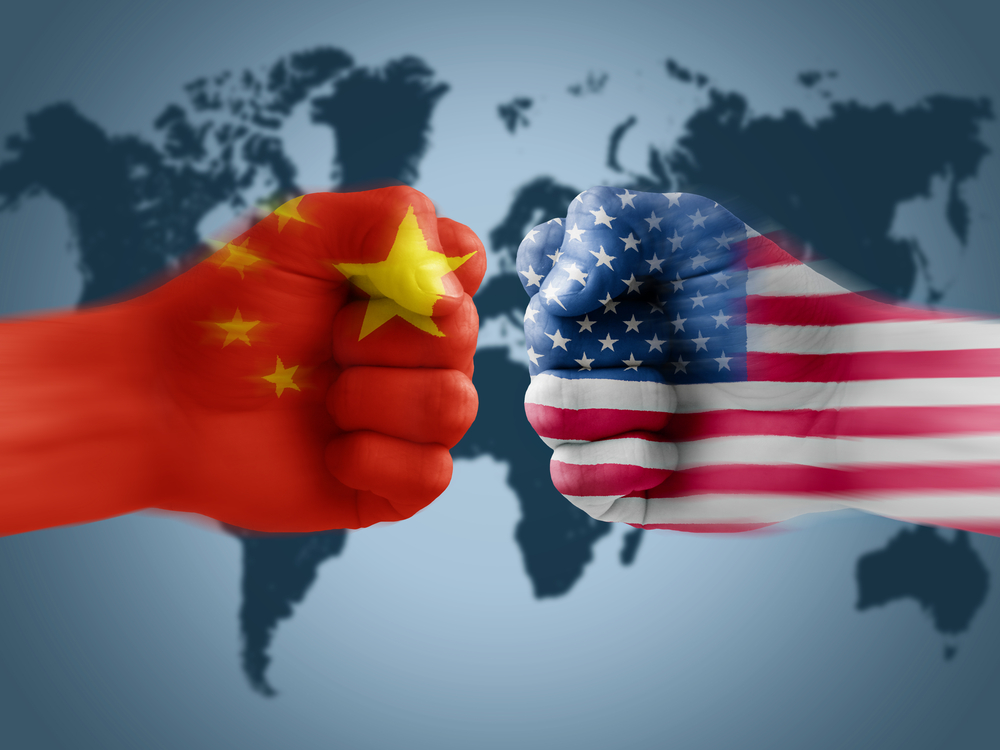In its most recent National Defense Strategy, the U.S. Department of Defense declared a policy of “integrated deterrence” against the People’s Republic of China, its primary “pacing challenge.” The document defined “integrated deterrence” as:
“…working seamlessly across warfighting domains, theaters, the spectrum of conflict, all instruments of U.S. national power, and our network of Alliances and partnerships. Tailored to specific circumstances, it applies a coordinated, multifaceted approach to reducing competitors’ perceptions of the net benefits of aggression relative to restraint. Integrated deterrence is enabled by combat-credible forces prepared to fight and win, as needed, and backstopped by a safe, secure, and effective nuclear deterrent.”
As was the case with Russia vis-à-vis Ukraine, a policy of deterrence through strength has only made war in Southeast Asia more likely—with myriad recent examples.
On March 23 a Chinese Coast Guard vessel fired a water cannon at and allegedly rammed a Philippine vessel as it attempted to resupply a grounded ship on a reef in the Spratly Islands. This was just the latest in a series of similar clashes.
The Spratly Islands are a cluster of tiny reefs, shoals, and islets in the South China Sea. They are claimed by China, the Philippines, Vietnam, and Taiwan. The vast majority of the American public has no idea that they even exist, nor do they care who owns them.
However, because the United States and the Philippines have a mutual defense treaty, Americans are obligated to send their sons and daughters to kill and die if Philippine forces come under attack there (or anywhere). State Department Spokesperson Matt Miller confirmed this in a March 23 statement about the incident:
“The United States stands with its ally the Philippines and condemns the dangerous actions by the People’s Republic of China (PRC) against lawful Philippine maritime operations in the South China Sea on March 23…The United States reaffirms that Article IV of the 1951 US-Philippines Mutual Defense Treaty extends to armed attacks on Philippine armed forces, public vessels, or aircraft—including those of its Coast Guard—anywhere in the South China Sea…”
In the case of the Philippines, integrated deterrence means more than just maintaining a mutual defense treaty. In the past year alone, the United States has pledged to fund the construction of a new Philippine-American port near Taiwan and has gained access to four other Philippine military bases. The United States has also conducted joint naval patrols with the Philippine navy and furthered their forces’ interoperability with joint military exercises that sometimes include Japan and Australia. The United States has also encouraged Japan and the Philippines to sign a Reciprocal Access Agreement, which would allow the two nations to deploy forces in each other’s territory. Japan already has such an agreement with Australia.
The U.S.-Philippine defense treaty and its accompanying policy emboldens Philippine President Marcos Ferdinand Jr. to be more aggressive in his territorial and maritime disputes. In turn, Sino-Philippine relations have deteriorated.
On December 20 of last year, Chinese Foreign Minister Wang Yi told his Philippine counterpart, Enrique Manalo, that “China-Philippines relations are at a crossroads,” referring specifically to the nations’ naval clashes in the South China Sea. Yi further warned that China will “definitely safeguard its rights” and “respond resolutely” to provocations. Yi specifically identified Philippine collusion with the United States and its regional partners as a source of contention.
For its own part, Japan has also clashed with Chinese forces over territory that holds absolutely no interest for the average American. The Senkaku islands are yet another series of rocks that the American public neither knows nor cares about. Despite this justifiable apathy, Americans are treaty-bound to sacrifice their children to enforce Japan’s claims to these tiny islands in the East China Sea. Secretary of Defense Lloyd Austin confirmed as much in October of last year.
The United States’ partnership with Japan is more intimate than with any other country on Earth. Over 53,000 American troops are stationed in Japan at approximately twenty-three installations. Furthermore, since its effective disarmament after World War II, the United States has gradually fostered Japan’s military redevelopment. In 2022, Japan announced that it was increasing its military budget by 56% and would acquire U.S.-produced Tomahawk missiles capable of striking the Chinese mainland. This should be cause for concern because Tomahawk missiles are nuclear-capable.
Next month, the United States and Japan are expected to announce a plan to restructure their forces’ interoperability. The plan will allow Japanese forces to coordinate with U.S. Forces-Japan instead of with Indo-Pacific Command, which is based in Hawaii. Although the specific details are currently unclear, the change is promised to be the biggest upgrade to the countries’ mutual security pact in “60 years.” It is openly aimed at North Korea and China.
Integrated deterrence with Taiwan has seen American Spec Ops deployed as military advisors to Kinmen, a small group of islands controlled by Taiwan. The islands are located just miles off the coast of mainland China. These “long term” deployments will see the advisors training Taiwan’s amphibious forces in preparation for a war against the mainland.
The scandalously provocative deployment is just the latest in a series of American policies that have sought to make Taiwan a grenade in China’s throat. In 2022, then-Speaker of the House Nancy Pelosi took an ill-advised junket to Taipei. China responded by shooting missiles over the island and simulating a blockade against it.
Last year, the United States deployed 200 troops to Taiwan, the largest American deployment to the island since 1979, when the U.S. officially recognized Taiwan as being part of China. Last year, the United States increased its weapon sales to Taiwan and even began financing the transfers and providing some arms free of charge.
These transfers violate Chinese-American agreements—especially the Third Joint Communique, through which the United States declared its intention to cease arms sales to Taiwan and agreed not to provide the island with more arms than China, either quantitatively or qualitatively.
Aside from the Spratly Islands, the most inconsequential territorial dispute in which the United States has embroiled itself concerns a patch of land at the top of the world.
In 2020, four Chinese and twenty Indian soldiers died when a melee ensued in Arunachal Pradesh, a state located in the Indian Himalayas that is claimed by both India and China. After the clash, the United States signed an intelligence-sharing agreement with India that would allow Indian forces to use American satellites to track Chinese troop movements in the disputed area. This intelligence was used by the Indians during a subsequent clash in 2022.
Just last week, the State Department issued a statement backing India’s claim to the disputed area, drawing China’s ire. Both India and China are nuclear-armed states.
These four recent examples of America’s “integrated deterrence” against China each involve territorial disputes that do not concern the United States and are of no consequence to its people. Each showcases examples of confrontational and provocative American behavior. Knowing they have American support, our allies and partners are emboldened to act recklessly. Instead of causing Chinese forces to back down, our actions only draw warnings and contempt from Chinese officials.
If the policy of “integrated deterrence” were indeed deterring China, we’d likely see a decrease of confrontational incidents with Chinese forces. That is not the case. Furthermore, it is not enough to argue that “integrated deterrence” is working because war has not yet broken out—U.S. support for Ukraine “deterred” a war with Russia until it didn’t.
It is not in Americans’ best interests to risk war between their country and China over obscure territorial disputes and shipping lanes in the South China Sea. Since our strategic partners and allies have been building up and integrating their militaries with each other, they are certainly capable of negotiating on their own from a position of strength.








